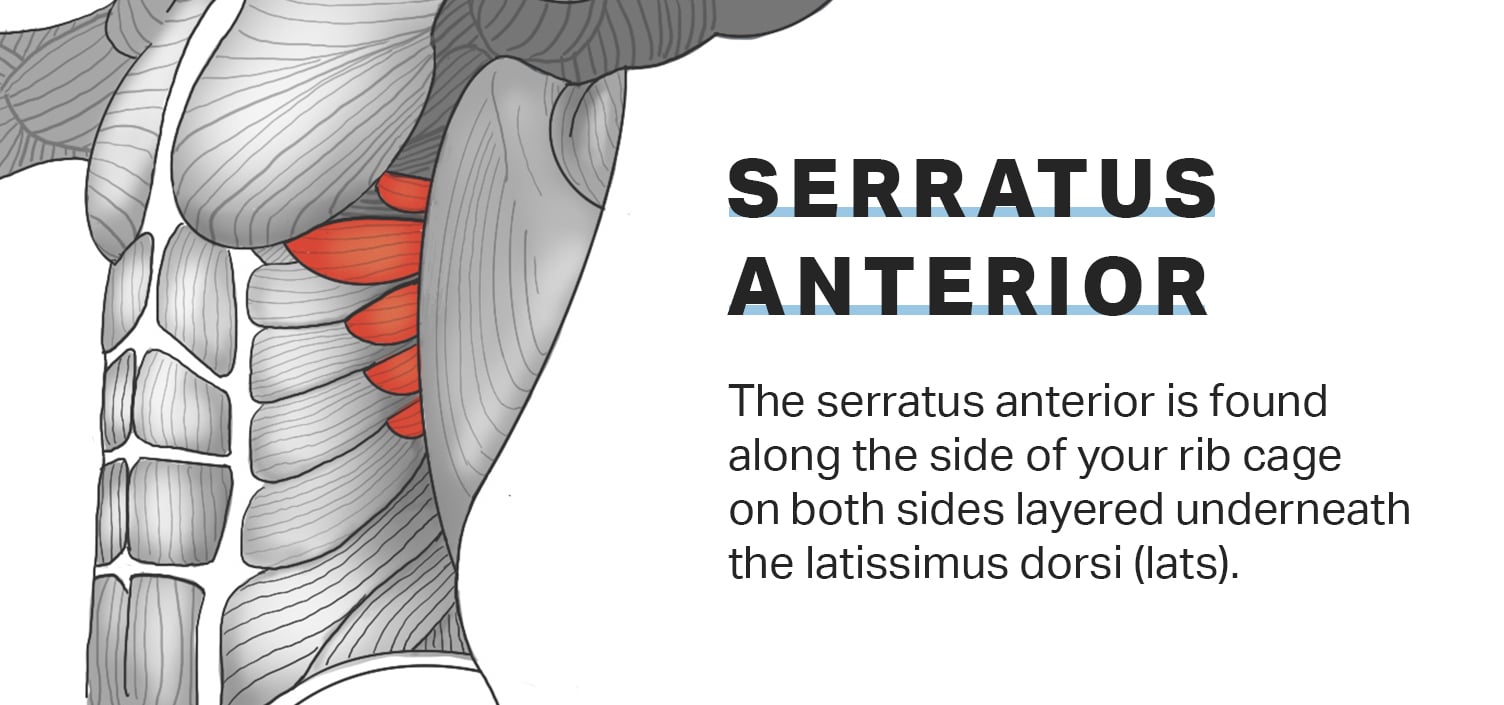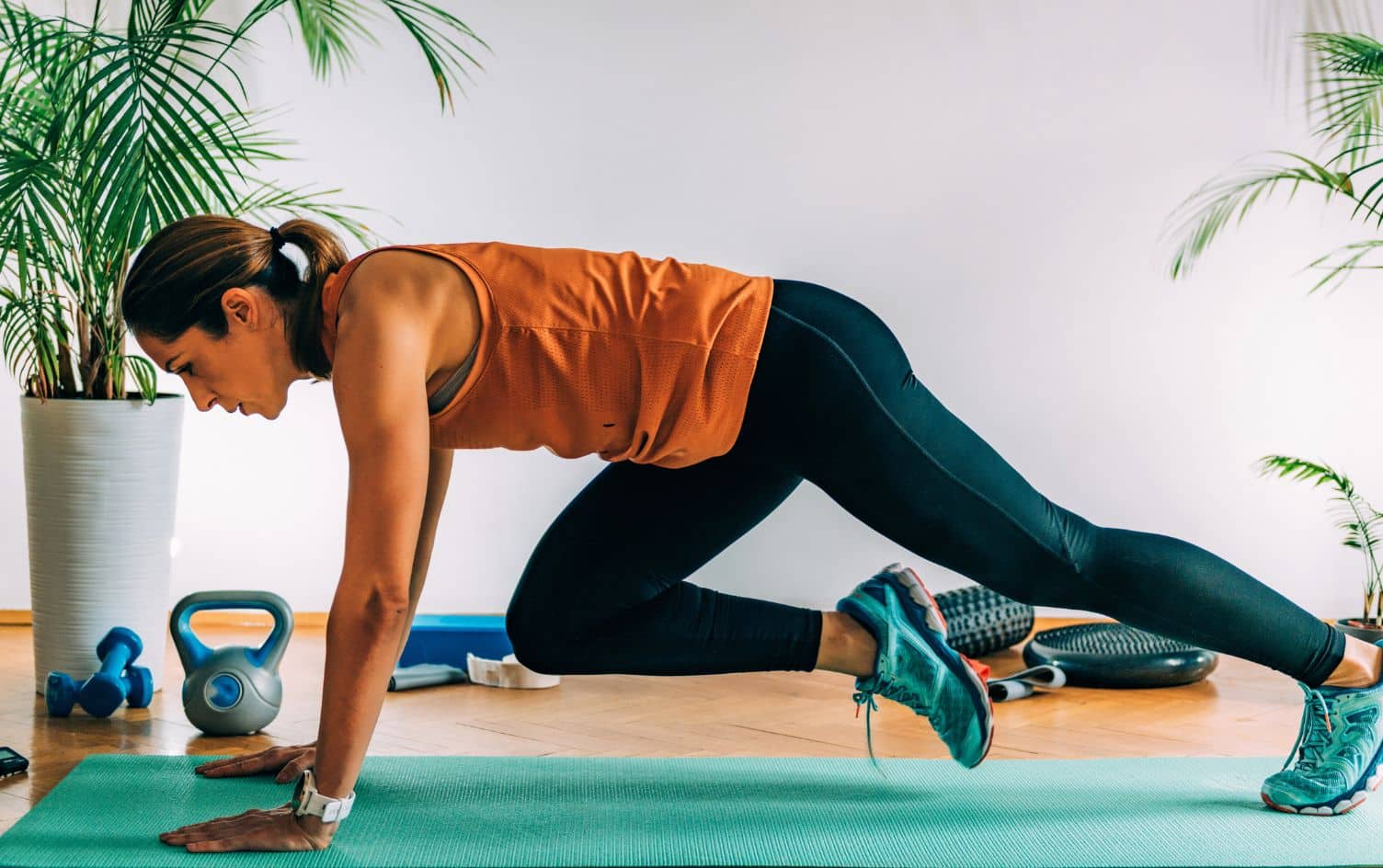If pushups, pullups or overhead movements are on your list of fitness goals, listen up: To get better at shoulder-heavy exercises, like overhead presses, snatches or even sports like volleyball, you need healthy shoulders. While you’re probably aware of many of the muscles involved in shoulder function, such as your internal and external rotators, lats and traps, there’s one very tiny muscle that doesn’t get nearly enough attention: the serratus anterior.
This little-known (to most people) muscle can be a game-changer when it comes to finally increasing your upper-body strength and mastering shoulder-centric exercises. That’s not because it’s the primary mover in these exercises, but instead because it helps your shoulder joint function properly. When that happens, you have more stability and strength than you did before.

HOW DOES THE SERRATUS ANTERIOR WORK?
The serratus anterior is found along the side of your rib cage on both sides layered underneath the latissimus dorsi (lats), and can often be seen prominently in punching athletes like boxers, according to Meghan Braun, DPT, a certified strength and conditioning specialist of Body Mechanics Physical Therapy. The muscle has a fan-shaped appearance and attaches to many of the upper ribs.
Turns out, this little muscle is a multi-tasker. “It functions primarily as a scapular abductor and protactor, meaning [it] pushes the shoulder blade forward,” Braun says. It also helps your shoulder blade rotate upward, which happens when you lift your arms over your head. When the shoulders are working properly, the serratus anterior also assists in rib cage expansion for breathing.
So why do most people need a stronger serratus anterior? “Any time a muscle is not at its optimal length, it cannot function efficiently,” explains Austin Misiura, DPT, certified strength and conditioning specialist of Pure Physical Therapy. “More often than not, due to prolonged sitting or desk work, the serratus will be in a shortened position, leaving it with a decreased ability to contract. (If it’s already short, it can’t really get much shorter.)”
This can affect shoulder mechanics and cause overuse or compression of tendons of the shoulder, especially the rotator cuff, Misiura says. Not only can this make you weaker in this area, but it can also leave you vulnerable to shoulder injury.
STRENGTHENING TIPS
The benefits of strengthening your serratus anterior and thus, improving your shoulder function, are pretty impressive. “You will be able to lift heavier in exercises such as military press and bench press, do more pushups and hold yourself up longer in arm balance poses — or do them when you couldn’t do them before.” Misiura notes. “As far as functional benefits, lifting and carrying objects would become easier for you.” Plus there’s the added benefit of injury prevention due to having a more stable shoulder.
To work your serratus, try these three exercises:
Pushup Plus: “This is much like a regular pushup, only it adds protraction of the shoulder blades by pushing the back toward the ceiling at the end of the ‘up’ portion of the pushup,” explains Jennifer Novak, MS, a strength and conditioning coach and owner of Peak Symmetry. “If needed, you can practice that portion of the move alone, either in plank position on the ground or even on a wall.”
Straight Arm Pulldowns: “Using a cable machine and a straight bar, stand in ready position (hips slightly hinged, knees slightly bent, core engaged) with the bar attached above your head,” Novak instructs. “With the palms pressing on the top of the bar and thumbs wrapped around the other side if needed, pull the bar straight down to the thighs.” Keep your arms straight (without locking your elbows) as you pull the bar down, then let them come back up to the starting position slowly and under control.
Cable Deltoid Raises: “Stand with the cable behind you, using an adequate amount of weight to challenge yet maintain proper form, palm neutral,” Novak says. “Lift the cable up and out (away from midline) about 25–30 degrees, slowly. Hold at shoulder level for approximately 2–3 seconds, then slowly return to starting position.”





2 Responses
Won’t just doing the actual exercises it helps (bench press, shoulder press etc.) strengthen this muscle anyway? Using lighter weight if needed.
Definitely need photos or video of exercises to improve the serratus anterior muscle. I can’t follow written instructions.